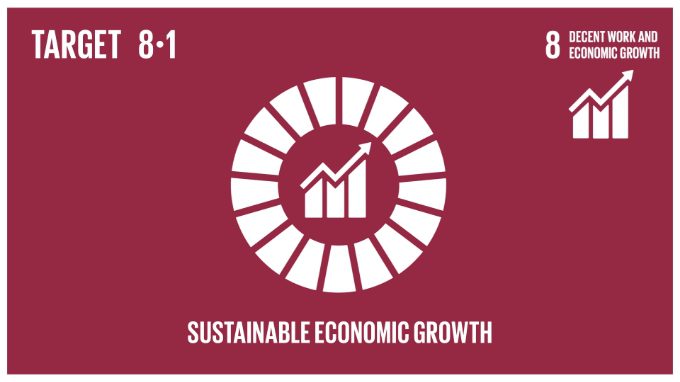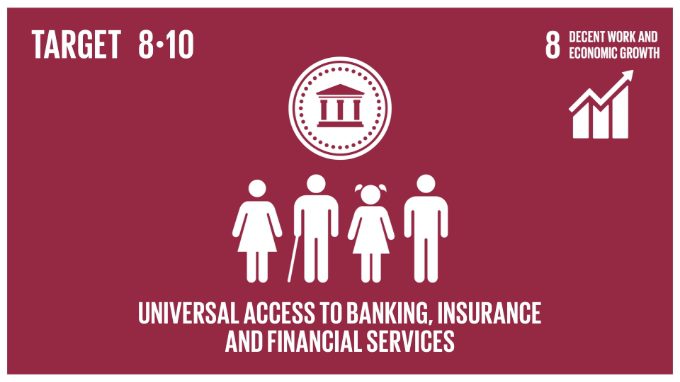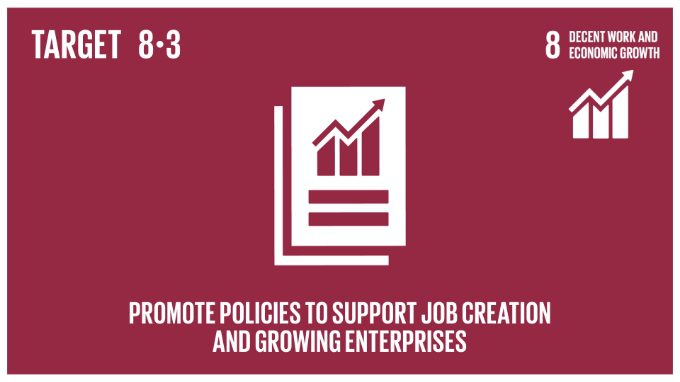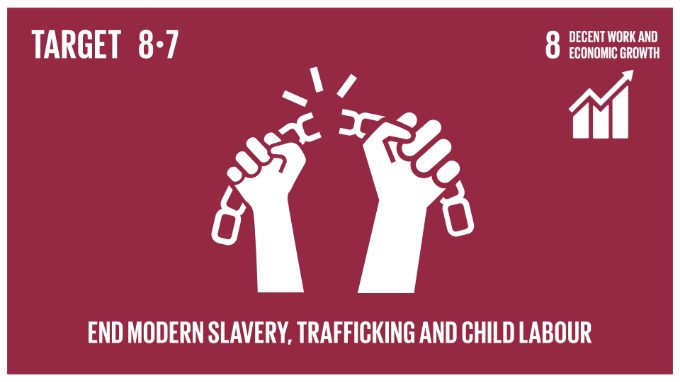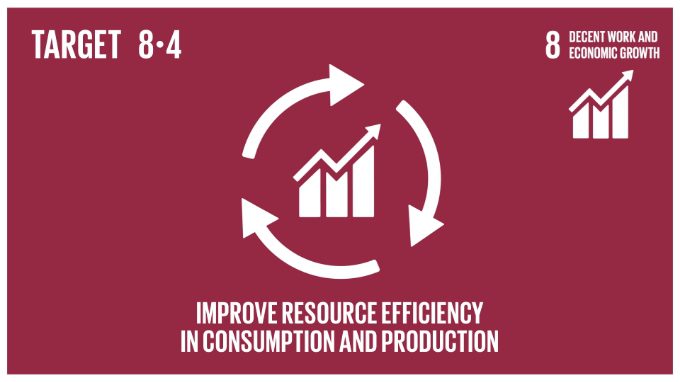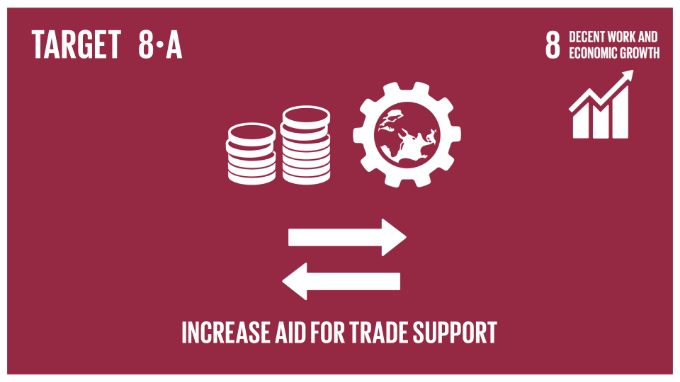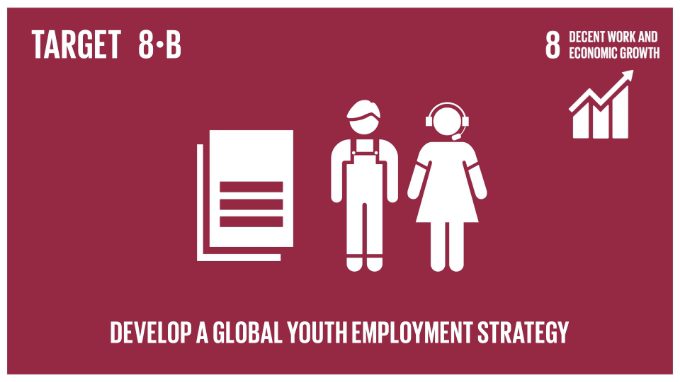Overview:
Economic growth should be a positive force for the whole planet.This is why we must make sure that financial progress creates decent and fulfilling jobs while not harming the environment. We must protect labour rights and once and for all put a stop to modern slavery and child labour. If we promote job creation with expanded access to banking and financial services, we can make sure that everybody gets the benefits of entrepreneurship and innovation.

International Progress 2023:
Progress towards achieving SDG8 has been challenging and the world is far from reaching most of the targets. The lingering effects of COVID-19, cost-of-living crises, trade tensions, uncertain monetary policy paths, rising debts in developing countries, and the war in Ukraine can each significantly set back global economic growth. Combined, these crises are placing the global economy under a serious threat.
Global real GDP per capita is forecast to slow down in 2023, putting at risk not just employment and income but also advances in equitable pay for women and decent work for young people. Achieving SDG8 will require a wholesale reform of our morally bankrupt financial system in order to tackle rising debts, economic uncertainties and trade tensions, while promoting equitable pay and decent work for young people.
Targets —
-

Target 8.1
Following a sharp decline of 4.1% in 2020, global real GDP per capita increased by 5.0% in 2021. However, growth in global real GDP per capita is forecast to slow down to 2.1% in 2022 and further to 1.0% in 2023, before recovering somewhat to a growth rate of 1.8% in 2024. The growth in real GDP of LDCs slowed down from 5% in 2019 to just 0.2% in 2020 before recovering to 2.6% in 2021. It is expected that the growth in real GDP of LDCs would strengthen to 4.3% in 2022 and to 4.4% and 5.4% in 2023 and 2024, respectively.
-

Target 8.10
Accelerated adoption of digital solutions is transforming access to finance. Globally, in 2021, 76% of adults had an account at a bank or regulated institution such as a credit union, microfinance institution, or a mobile money service provider, an increase from 62% in 2014.
-

Target 8.2
After a sharp decline in 2020 due to the COVID-19 pandemic, labour productivity rebounded in 2021 by 2.4%. Productivity growth slowed in 2022, increasing by only 0.5%. However, even before the onset of the COVID-19 pandemic, productivity growth had been slowing around the world. The latest estimates extend the downward growth trend, from an average annual rate of 1.8% between 2000-14 to 1.4% between 2015-22.
-

Target 8.3
Globally, 58.0% of those employed were in informal employment in 2022, amounting to around 2 billion workers in precarious jobs, most lacking any form of social protection. Prior to the onset of the pandemic, the incidence of informal employment had been slowly declining and stood at 57.8% in 2019. The pandemic resulted in a disproportionate job loss for informal workers, particularly for women, in 2020. The subsequent recovery from COVID-19 has been driven by informal employment, which has caused a slight increase in the incidence of informality.
-

Target 8.5 (i)
Equal treatment in employment, including fair and equitable earnings, is fundamental for achieving decent work for all. The median gender pay gap across 102 countries is approximately 14%. However, this calculation is only based on average hourly earnings, thus not controlling for characteristics such as the sector or occupation, educational level or amount of work experience.
-

Target 8.5 (ii)
The global unemployment rate declined significantly in 2022, falling to 5.8% from a peak of 6.9% in 2020 as economies began recovering from the shock of the COVID-19 pandemic. Despite an uncertain global economic outlook, unemployment is projected to increase only moderately, as a large part of the shock is being absorbed by falling real wages in an environment of accelerating inflation. Global unemployment is projected to edge up slightly in 2023, by around 3 million, to reach 208 million, corresponding to an unemployment rate of 5.8%.
-

Target 8.6
Globally, nearly one in four (23.5%) young people were not in education, employment, or training (NEET) in 2022. Although this is a slight decrease since 2020, when the NEET rate was at an all-time high, it remains above the 2015 baseline of 22.2% and a long way from the 2030 target.
-

Target 8.7
The latest estimates indicate that the number of children in child labour rose to 160 million worldwide at the beginning of 2020 – an increase of 8.4 million children in the last four years. This translates to almost 1 in 10 of all children in child labour worldwide.
-

Target 8.9
The share of tourism in global GDP nearly halved in 2020 as a result of the COVID-19 pandemic. The 2021 data shows a very modest 6% upturn, indicating that tourism’s economic contribution is on the path to recovery.
Ireland’s
Progress 2023:
According to Eurostat figures, Ireland has the worst rate in Europe of employing people with disabilities. A damning report from the European Disability Forum (EDF) found that the average rate of employment for people with disabilities in the EU is 51%. However, in Ireland, the rate is just 32.6% , the joint-worst in Europe alongside Greece—however, Ireland has a healthy rate of general employment where Greece does not. Only 15% of women with disabilities are in full-time employment. The European Disability Foundation pointed to a number of reasons for this: The loss of disability allowance when a person starts working—leading to fear of “in-work poverty”; employers being “resistant” to adjustments which would enable people with disabilities to do their job better.; and discrimination against people with disabilities due to “misconceptions”.
In Ireland, workers under 18 are only guaranteed up to 70% of the national minimum wage per hour. Workers who are part of the ‘gig’ economy are technically self-employed, with no formal dependence relation and, therefore, no health and safety protection, rights to various kinds of paid leave, and rights to employers’ contributions to pensions and social insurance. According to Lorenzo Cini, a UCD academic, “A particular worry in Dublin at present is the subletting of courier delivery accounts to undocumented migrants. This results in a “completely invisible and very weak workforce, not able or willing to mobilise because they can’t complain about conditions.”
Targets —
-

Sustain per capita economic growth in accordance with national circumstances and, in particular, at least 7 per cent gross domestic product growth per annum in the least developed countries.
CSO data
Claim: Achieving
8.1.1 GDP at constant prices rose from €46,556 to €70,138 per Capita (person) between 2014 and 2019, an increase of 51%.
8.1.1
Proportion of population with access to electricity
-

Strengthen the capacity of domestic financial institutions to encourage and expand access to banking, insurance and financial services for all.
CSO data
Claim: Achieving
8.10.1 There were 1,912 financial services branches in 2019, 956 of which were post offices. There were 58 ATMs per 100,000 inhabitants in Ireland in 2019, down from 62 ATMs in 2018. However, the number of point-of-sale terminals increased from 4,739 per 100,000 inhabitants in Ireland in 2018, to 6,356 in 2019. This latter figure was approximately 86% higher than the Euro Area ratio and 94% higher than the EU ratio.
8.10.2 The number of debit cards in active use rose from 3.89 million to 4.67 million between 2015 and 2020, while the number per person aged 15 years and over increased from 1.1 to 1.2.
8.10.1
Number of commercial bank branches per 100,000 adults and (b) number of automated teller machines (ATMs) per 100,000 adults
8.10.2
Proportion of adults (15 years and older) with an account at a bank or other financial institution or with a mobile-money-service provider
-

Achieve higher levels of economic productivity through diversification, technological upgrading and innovation, including through a focus on high-value added and labour-intensive sectors.
CSO data
Claim: Achieving
8.2.1 GDP at constant prices per employed person rose 37% between 2014 and 2019, from €108,749 to €148,626.
8.2.1
Annual growth rate of real GDP per employed person
-

Promote development-oriented policies that support productive activities, decent job creation, entrepreneurship, creativity and innovation, and encourage the formalization and growth of micro-, small- and medium-sized enterprises, including through access to financial services.
CSO data
Claim: Achieving
8.3.1 The labour force grew from 2.331 million in Q4 2016 to 2.445 million by Q4 2020. Over this time period, the number of people in employment grew from 2.164 million to 2.306 million. Note this is not disaggregated by sector and sex as per the indicator.
8.3.1
Proportion of informal employment in total employment, by sector and sex
-

Improve progressively, through 2030, global resource efficiency in consumption and production and endeavour to decouple economic growth from environmental degradation, in accordance with the 10-Year Framework of Programmes on Sustainable Consumption and Production, with developed countries taking
the lead.CSO data
Status: Increase in material footprint and consumption
8.4.1 The material footprint rose in Ireland from 98.33 million tonnes in 2010 to 102.19 by 2017. However, the material footprint per person fell slightly over this time period, from 21.59kg to 21.50kg. GDP per material footprint increased from 2.38 to 3.54 US dollars per kg between 2010 and 2017.
8.4.2 Domestic Material Consumption was estimated at 121.7 million tonnes in 2019 which was 3.5 million tonnes or 3.0% higher than in 2018. The Domestic Material Consumption of non-metallic minerals increased by 7.1 million tonnes or 13.5% between 2018 and 2019 whereas that of fossil fuels fell by 4.3 million tonnes or 22.4%.
8.4.1
Material footprint, material footprint per capita, and material footprint per GDP
8.4.2
Domestic material consumption, domestic material consumption per capita, and domestic material consumption per GDP
-

By 2030, achieve full and productive employment and decent work for all women and men, including for young people and persons with disabilities, and equal pay for work of equal value.
CSO data
Status: Gender pay gap noted
8.5.1 Estimates from the Earnings and Labour Costs Quarterly report in June 2021 show that average hourly earnings rose from €24.23 in Q4 2019 to €25.56 in Q4 2020. In 2018, median hourly earnings were €17.30 for males compared with €16.28 for females.
8.5.2 In Q4, 2024 the overall unemployment rate was 5.7%, with males showed having a rate of 5.9%, compared with 5.5% for females. Note this is not disaggregated by age and ability.
8.5.1
Average hourly earnings of female and male employees, by occupation, age and persons
with disabilities8.5.2
Unemployment rate, by sex, age and persons with disabilities
-

By 2020, substantially reduce the proportion of youth not in employment, education or training.
CSO data
Claim: Achieving
8.6.1 Young people aged 15-19 years had an employment rate of just 15.4% in Q4 2020. In the same period, the employment rates for females in the 20-24 years age group was 57.6%, marginally higher than the male rate of 57.5%. The highest unemployment rate in Q4 2020 was 19.4% for those aged 15-19 years. Male and female rates of unemployment were broadly similar except for those aged 15-19 years where the female rate was 21.5% compared to 17.5% for males. In Q4 2020 the male participation rates were above the female rates in all age groups except those aged 20-24 years. Females aged 20-24 years had a participation rate of 65.7% compared with 65.2% for males.
8.6.1
Proportion of youth (aged 15-24 years) not in education, employment or training
-

Take immediate and effective measures to eradicate forced labour, end modern slavery and human trafficking and secure the prohibition and elimination of the worst forms of child labour, including recruitment and use of child soldiers, and by 2025 end child labour in all its forms.
CSO data
Claim: Achieving
8.7.1 According to the Irish Statute Book under the Protection of Young Persons (Employment) Act 1996 employers cannot employ children under age 16 years in regular full-time jobs. The maximum working week for children aged 16 and 17 years is 40 hours with a maximum of 8 hours a day.
8.7.1
Proportion and number of children aged 5-17 years engaged in child labour, by sex and age
-

Protect labour rights and promote safe and secure working environments for all workers, including migrant workers, in particular women migrants, and those in precarious employment.
CSO data
Claim: Achieving
8.8.1 There were 47 fatal work-related accidents in Ireland in 2019. Of these, 41 involved worker victims and six involved non-worker victims. This is a considerable improvement since 1998 when 61 workers and 12 nonworkers died in work-related accidents. The rate of fatal accidents to workers has fallen from 3.8 per 100,000 workers in 1998 to 1.8 per 100,000 workers in 2019.
8.8.2 No data provided
8.8.1
Fatal and non-fatal occupational injuries per 100,000 workers, by sex and migrant status
8.8.2
8.8.2 Level of national compliance with labour rights (freedom of association and collective bargaining) based on International Labour Organization (ILO) textual sources and national legislation, by sex and migrant status
-

By 2030, devise and implement policies to promote sustainable tourism that creates jobs and promotes local culture and products.
CSO data
Claim: Achieving
8.9.1 Overseas Tourism and Travel Earnings from trips to Ireland was €6,867 million in 2019. It rose from 2.1% of GDP in 2010 to 2.4% by 2014 but dropped since then to 1.9% by 2019.
8.9.1
Tourism direct GDP as a proportion of total GDP and in growth rate
-

Increase Aid for Trade support for developing countries, in particular least developed countries, including through the Enhanced Integrated Framework for Trade-related Technical Assistance to Least Developed Countries.
CSO data
Claim: Achieving
8.a.1 The value of aid in 2019 for trade commitments and disbursements was €32.0 million, 5% of the total Official Development Assistance (ODA) budget of €705.6 million.
8.a.1
Aid for Trade commitments and disbursements
-

By 2020, develop and operationalize a global strategy for youth employment and implement the Global Jobs Pact of the International Labour Organization.
CSO data
Claim: Achieving
8.b.1 The Pathways to Work 2016-2020 will fuel the drive to full employment and the increase in the numbers at work to 2.2 million by 2020. The Action Plan for Jobs 2018 is the seventh in an annual series outlining the Government’s joined-up approach to maximising employment across Ireland.
8.b.1
Existence of a developed and operationalized national strategy for youth employment, as a distinct strategy or as part of a national employment strategy



